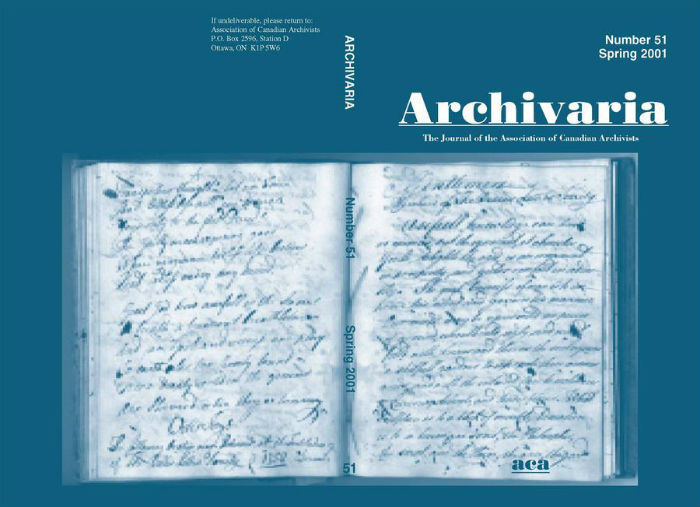Constructing a Function-Based Records Classification System: Business Activity Structure Classification System
Résumé
In 1995, the National Archives of Canada (NA) undertook a project to review and replace the General Records Disposal Schedules of the Government ofCanada (GRDS). The GRDS contained the records disposition authorities and retention periods for all common administrative records created, collected, and controlled by the Government of Canada (GoC). It had not undergone any major revisions since the 1960s. The replacement of the GRDS, and the manner in which it was done, has had a profound effect on various other aspects of federal government record-keeping, one of which is its Subject Block Numeric Classification System. This article briefly examines what impact the replacement of the GRDS has had on the subject-based classification systems in the GoC, and proposes what may be required in the future to develop function-based file classification systems to facilitate the management of government information holdings and the application of records disposition authorities.This article is written in a government context but can be applied to records management practices in the private sector as well. It is aimed at an audience that is primarily interested in and responsible for the conception, design, implementation, and maintenance of record classification systems based on an analysis of business functions.
Résumé
En 1995, les Archives nationales du Canada ont mis sur pied un projet pour renouveler et remplacer les Plans généraux d’élimination des documents du gouvernement du Canada (PGED). Ces plans contiennent les autorisations de disposition ainsi que les périodes de conservation pour tous les documents administratifs communscréés, accumulés et contrôlés par le gouvernement du Canada; ils n’avaient pas étérévisés de façon substantielle depuis les années 1960. Le remplacement des PGED, ainsi que la façon dont cette démarche a été faite, a eu un profond effet sur divers aspects de la gestion des documents du gouvernement fédéral, l’un d’entre eux étant le système de classification par sujets et blocs numériques. Cet article examine l’impact du remplacement des PGED sur les systèmes de classification par sujet du gouvernement canadien et propose ce qui pourrait être requis dans le futur afin de développer un système de classification basé sur les fonctions qui faciliterait la gestion de l’information détenue par le gouvernement et l’application des autorisations de disposition. Cet article, qui est rédigé dans un contexte gouvernemental, peut également être appliqué à la gestion des documents dans le secteur privé. Il vise un public intéressé par ou encore responsable de la conception, du design, de la mise en place et du maintien de systèmes de classification de documents basés sur une analyse des fonctions des entreprises.
Authors of manuscripts accepted for publication retain copyright in their work. They are required to sign the Agreement on Authors' Rights and Responsibilities that permits Archivaria to publish and disseminate the work in print and electronically. In the same agreement, authors are required to confirm that "the material submitted for publication in Archivaria, both in its paper and electronic versions, including reproductions of other works (e.g. photographs, maps, etc.) does not infringe upon any existing copyright." Authors of manuscripts accepted for publication retain copyright in their work and are able to publish their articles in institutional repositories or elsewhere as long as the piece is posted after its original appearance on archivaria.ca. Any reproduction within one year following the date of this agreement requires the permission of the General Editor.





